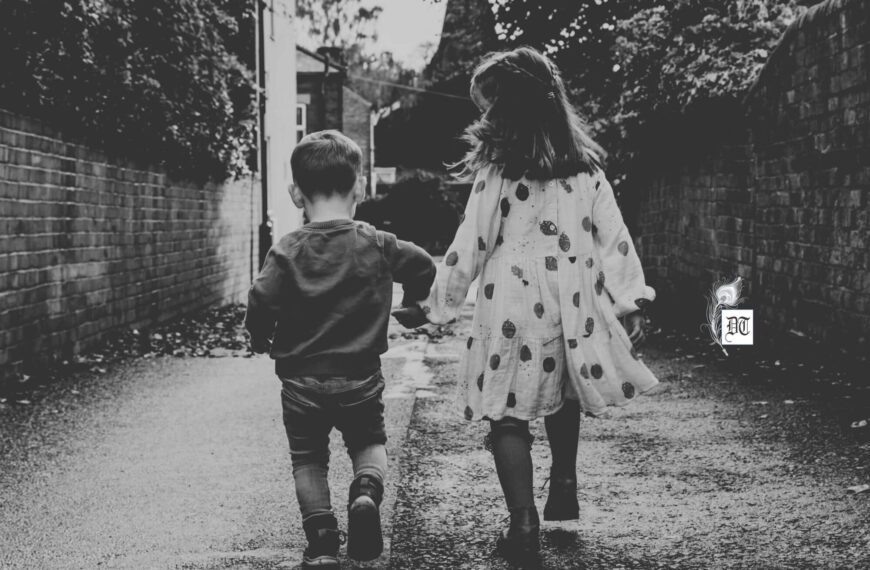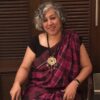Without the awareness of their rights, these marginalised people suffer in silence and brokenness. Torture is an intentional use of intolerable pain to destroy/damage the physical and psychological integrity of the individual and, by extension, the integrity of the family and community. Survivors of Torture and Organised Violence (TOV) are prone to health disorders such as depression, anxiety, substance abuse and chronic pain. Shirin tells us that the whole process of torture free model village is community based on psycho-social rehabilitation through human rights based approach. Here’s an in-depth research, in the weekly column, exclusively for Different Truths.
Torture and police atrocities further aggravate the already dire poverty situation and marginalisation of the downtrodden people, in most of the villages, in different parts of the country. Torture normally happens in the rural areas, in the far-flung villages of the country where Dalits, backward social groups and minorities are unable to fight effectively for defending their rights. They are the primary targets and victims of torture by the police. Without the awareness of their rights, these marginalised people suffer in silence and brokenness. Torture is an intentional use of intolerable pain to destroy/damage the physical and psychological integrity of the individual and, by extension, the integrity of the family and community. Survivors of Torture and Organised Violence (TOV) are prone to health disorders such as depression, anxiety, substance abuse and chronic pain. In broader view torture affects five basic human needs.
- The need to feel safe
- The need to feel some control over ones lives
- The need to build trust
- The need to feel close/connected to others
- The need to feel valued (self-worth)
These five aspects are lacking in the context of this research. The combination of individual trauma from exposures to violence and the trauma from exposures to structural violence and trauma from police torture creates significant impact on development, health and wellbeing. Trauma survivors may be able to describe their experiences objectively, but cannot necessarily address the vital personal issues of helplessness and guilt. They are commonly locked into a cycle in which they re-experience and then attempt to avoid their traumatic memories. This can lead to a loss of one’s sense of purposeful identity and to the alienation from others. The relationship between exposure to traumatic events and unhealthy, such as, cigarette smoking, alcohol and drugs abuse or high-risk behaviour including fighting, dangerous sexual relationships, and sensation-seeking has been well established.
Psychological responses described in survivors of torture are protean. They include impaired memory and concentration, headache, anxiety, depression, sleeplessness with nightmares and other intrusive phenomena, emotional numbing, sexual disturbances, rage, social withdrawal, lack of energy, apathy, and helplessness (Abildgaard et al. 1984; Allodiand Cowgill 1982; Cathcart Berger and Knazan 1979; Ramussen and Lunde, 1980).
These forms and violence of torture leads to unbridled forms of vulnerability with extremely potential traumas. The scope of resilience and coping mechanism under these circumstances are very fragile. The figure below gives details of the consequences of violence and vulnerability Some of the biological, visible indications of physical abuse include injuries such as bruising, cuts, fractures and burn. Head injuries, loss of hair from violent pulling, subdural haematomas and detached retinas are also indicator of concern. Experiencing the level of aggression associated with being injured is frightening at any age. The reaction to fear may involve aspects of fight or flight response.
The flight or fight response to a critical event or perceived threat includes an intense stimulation of the sympathetic nervous system and the adrenal gland. The physical components of the flight or fight response entail a rapid, yet elaborate process involving brain, the emotions, the autonomic nervous system (ANS), central nervous system (CNS) among other organs. The brain communicates the message of alarm though the CNS, travelling through pituitary gland, which then produce adrenaline. The subsequent secretion of the neurotransmitters serotonin and nor epinephrine then result in a mobilisation of the fats and an increase in oxygen and blood to the necessary cell, which fortifies the body’s capacity to withstand the challenges it is facing (Lawrence and Zittel-Palmara, 2002). Those physical reactions also raise heart, blood-pressure and respiratory rates, along with blood flow to the muscles, in either to facilitate the body for fighting or fleeing from the situation. It may be also be associated with higher level of aggression (i.e. fight) among people who have exposed to trauma (Teicher 2000).
There are countless ways in which people are overtly and covertly exposed to trauma. People who have experienced trauma are referred to as ‘survivors’, rather than ‘victims’. This is an intentional word choice, meant to emphasise strength, and to reflect empowerment rather than victimisation. Silence in the face of potentially crucial conversations – conversations in which the stakes are high, emotions run strong, and there are sharply opposing viewpoints – is typically the path of least resistance. It goes to extraordinary lengths to counter the natural pressure that people feel to remain silent, relationships will suffer, performance will reduce, quality will be effected, will not be working to its full potential, because more problems will be created as people try and ‘work around’ the initial problem.
The Mental Health Care Bill, introduced in parliament of India, in August 2013, is a first step in expanding the country’s mental health infrastructure. There may be around 3000 adequately qualified psychiatrists and 1000 clinical psychologist in the entire country of more than a billion populations. In Uttar Pradesh alone, there may only be less than 100 psychiatrists and 100 psychologists. This situation led to the collaborative efforts of with DIGNITY.
Danish Institute & PVCHR developed Testimonial Therapy (TT) as a brief narrative therapy for the healing and rehabilitation of the survivor, which was later, used in Sri Lanka, Cambodia and Philippines. TT involves the narration of survivors ‘traumatic experiences, jointly edited therapists and the survivor.
But injustice and exploitation of the people cannot always proceed smoothly unscathed. Small steps for justice can accumulate and result in qualitative change in due time. The model village processes are based on the resilience theory. Torture free village is a village where every individual is assured of his or her social, political, economic, and cultural rights as per the Universal Declaration of Human Rights (UDHR) and is living together within the society without any form of torture and organised violence (TOV).
PVCHR believes in participatory activism, which means collective demand generations as peoples’ advocacy and social transformation creates torture free villages through Testimonial Therapy based on healing, education and empowerment.
The strategy for implementing various activities is made in the light of their capacities, talents, competencies, possibilities, visions, values and hopes, however dashed and distorted these may have become through circumstance, oppression and trauma. The strengths approach requires an accounting of what people know and what they can do, however inchoate that may sometimes seem. It requires composing a roster of resources existing within and around the individual, families and community.
The communities may be experiencing problems or difficulties but within the community there are strengths, resources and abilities that are not being used, or are underused or are currently being blocked from outside sources, which once uncovered, unblocked and acknowledged, can be used to combat problems and promote positive growth and development (Greene and Lee, 2002). There are six basic principles of the strength perspectives as described by Saleebey (2009: 15-19), which include the following:
a) Every individual, group, family and community has strength: All communities are full of strengths and resources and have the wisdom and ability to transform and improve.
b) Trauma and abuse, illness and struggle may be injurious but they may also be source of challenges and opportunity: Communities may experience traumatic events, but communities can also be resilient and can overcome adversity, growing stronger in the process.
c) Assume that you do not know the upper limit of the capacity to grow and change, and take individual, group and community aspiration seriously: We should not confer with stereotypes or labels placed on communities, but rather encourage the community to define themselves and to reach for their goals without restrictions.
d) We best serve client by collaboration with them: All voices within the community should be sought, heard and valued, with the social worker working ‘with’ the community and ‘not’ on them.
e) Every environment is full of resources: Communities already possess strengths and resources, yet these may not always be recognised. Social Worker should access available strength and resources to communities to fully participate in soliciting change.
f) Caring, care taking and context: Human well-being is seen as related to caring. Relationships are often present within communities and communities should be encouraged to build on these relationships and to care for one another.
Based on these principles, the strengths perspective encourages identifying, acknowledging and searching for strengths and resources in order for the community to grow and to develop and use such strengths and resources to combat future problem and difficulties. As such assessments generally attempt to (1) focus on capacities rather than problems/needs; (2) actively seeks community participation and develop collaborative partnerships; (3) seek to tap and enhance community competencies; (4) seek to equalise power between residents and professionals; (5) be proactive rather than reactive to problems and (6) stress community contributions and ownership of the process and are thus empowerment driven.
The whole process of torture free model village is community based on psycho-social rehabilitation through human rights based approach. Psychosocial rehabilitation refers more specifically to restoration of the psychological and social functioning. It is based on two core principles.
- People are motivated to achieve independence and self-confidence through mastery and competence.
- People are capable of learning and adapting to meet needs and achieve goals (Cnaanet al. 1998).
Psychosocial Rehabilitation System (PRS) exhibits principles of hope, change and recovery. Psychological rehabilitation of the survivor leads to a certain degree of restoration of physical and mental states. This opens the possibility of his/her participation in a community movement and ultimately becoming a human rights defender.
©Shirin Shabana Khan
Pix from net.





 By
By
 By
By
 By
By
 By
By